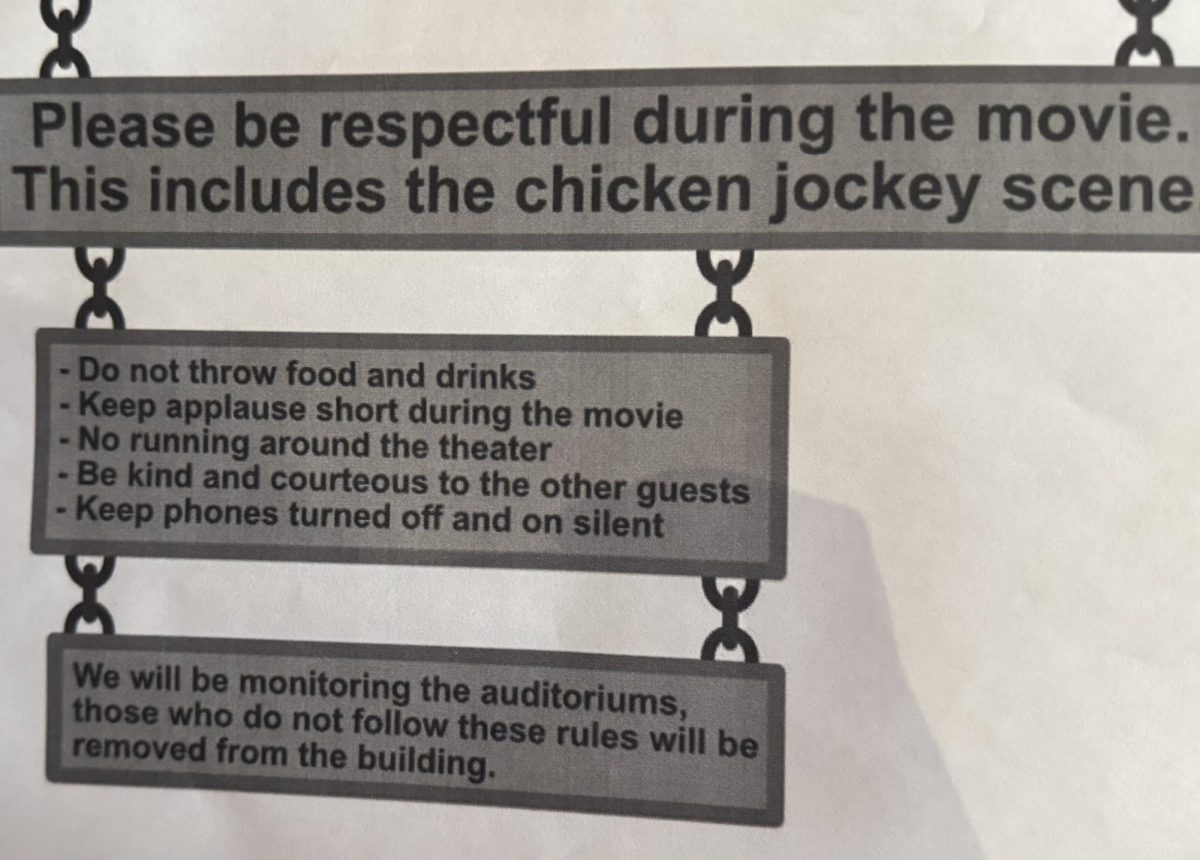An Adventure into Mac ‘n’ Cheese #heymac
The name itself, SpaghettiOs, foreshadowed a rather “O”minous experience.
The Campbell brand Mac ‘n’ Cheese came in a can, containing a tomato liquid that basically tasted like watered-down ketchup, which (to our surprise) contained circle shaped pasta, which is better than the half-circle shaped pasta in other instant mac ‘n’ cheese. The sauce was sour and sweet. Tasting the sauce by itself was an offensive assault on the tastebuds.
SpaghettiOs pasta, a round and kind of thin type of pasta, was the pasta of the moment. Initial thoughts: rubber bands. They are soggy in texture and, despite our hopes, more time in the sauce just made them soggier. More cooking just resulted in tastier rubber bands. The sauce is much worse than the pasta and doesn’t make up for just how much the pasta became soggy. We had one bowl for each type of SpaghettiOs—cheesy and beefy. Because there was no seasoning packet to add to the sauce, as is typical for Caucasian-style food like mac ‘n’ cheese, we had no choice but to drink the tomato sauce by itself. The bowl with just the tomato and cheese sauce was a gentle spaghetti sauce—not overpoweringly cheesy and tomato-y, as expected after trying the sauces by themselves. Those were the only identifiable flavors. The addition of the beef in the second bowl completely changed the overall taste of the soup. It added a decent, yet not overwhelming, amount of meat. But more than that, it enhanced the flavor. The beef brought out the other flavor, which was appreciated.
Interestingly enough, the flavors got substantially stronger once we got to the end of our bowls. There was a disappointingly large amount of cheese that hadn’t dissolved in the broth.
Overall, it was okay. It’d be great when there’s nothing else left to eat and the sourness of the sauce really isn’t that bad, even somewhat enjoyable, but your $1.59 is better spent elsewhere. Pasta is too important and cannot be overlooked when the sauce is less than excellent as well. It gets a solid “OH-kay…” ***
This piece is in response to the rice vermicelli article published in the September 23 issue of The Mac Weekly, as well as the ongoing series “Expanding the Ramen Repertoire:” Indomie Mi Goreng Fried Noodles, Rice Vermicelli Clear Soup, XO Sauce Flavour Ramen in the “Food & Drink” section. In these articles, the authors Ellyse Retana and Ellie Rudner offer their unfounded opinions on three types of instant noodles, which they have unceremoniously categorized as “ramen.” We hope that the satirical article on SpaghettiOs, modeled almost verbatim on the article about rice vermicelli, illustrates why this series’ portrayal of Asian instant noodles is deeply problematic. In the wake of the backlash from the community due to a Bon Appetit video of Tyler Akin teaching people how to eat pho, we expect better from The Mac Weekly and its associate writers. We can no longer remain silent about the way The Mac Weekly and its associate contributors Ellyse Retana and Ellie Rudner have portrayed Asian food with the racialized expectation of “cheap exotic Asian food,” as well as the Western sense of entitlement and condescension toward our culture and food.
First, the writers display a lack of real knowledge or cultural competence about instant noodles by creating this series, “Expanding the Ramen Repertoire,” and writing in this ignorant manner. Ramen and vermicelli are two different types of noodles. Just like SpaghettiOs is not a type of mac ‘n’ cheese, vermicelli is not ramen or a form of ramen. Different Asian cultures have modified and added their own spins to “instant noodle” products to suit their diverging tastes, cuisine and cooking needs. Instant noodles were not created just as late-night snacks for college students; they come from our traditions and ways of life, which the authors failed to acknowledge. Instant ramen, vermicelli and fried noodles showcase the uniqueness of each Asian culture, depending on the various way these noodles are used in our meals. Grouping our food into one “Asian” category is at best ignorant and careless, and at worst perpetuates the racist myth that all Asians are the same and that our cultures, history and stories are interchangeable. Furthermore, the exotification of instant noodle erases Asian American identities, as this series tells us that the food we consume day to day is too foreign to fit within the mainstream “American” cuisine and warrants a special adventure.
The sense of entitlement and condescension in this article is offensive, especially given the authors’ ill-informed understanding of instant noodles. In an article in this series, the authors use phrases like, “we’re unsure of what exactly ‘XO Sauce Flavour’ is,” and “we’re unsure of the actual composition of the oil.” In another article, the authors state, “the broth, of course, can make or break one’s ramen experience, and when eating Mi Goreng, you won’t want to leave a single drop.” Mi Goreng is meant to be eaten without the broth. Paradoxically, given their lack of knowledge about instant noodles, the authors somehow felt that they were perfectly qualified to pass judgement on what constitutes “ramen” that is “worth the splurge of $0.50” or “ramen” that is just “eh.” More than that, the authors did not hesitate to degrade and insult our food with baseless and confusing comments like, “oil packets in ramen cause an unpleasant whole body sensation” and “initial thoughts: shoelaces.” Finally, the authors are entitled enough to say, “we figured if we’re going to eat something like instant ramen, we may as well do it right.” Like, who is you?
Additionally, these articles operate with the assumption that Asian food must be cheap. In this article, the authors write about a $0.49 rice vermicelli pack and expect it to be a gourmet meal. In another article, the authors complain that a dollar is too pricey for instant noodles. Not only do the authors expect to take an adventure into the exotic “repertoire” of ramen, but they also expect to pay less than a dollar for it. It is hard to imagine that we might complain about the cost of instant mac ‘n’ cheese or SpaghettiOs, and we certainly would not expect the quality of pasta served at an Italian restaurant when we consume these products. This attitude toward Asian food is harmful because it is constructed upon the pervasive and racist notion that Asian food, and thereby Asian labor, knowledge, experience and culture, must be cheap and readily available for consumption and judgement.
Last, the concept of “expanding the repertoire” reeks of the imperialist and Orientalist lens through which Western people view our cultures and history. The authors utilize phrases like, “go forth and expand your instant ramen horizons” and “[the noodle brand] allows the consumer to choose their own adventure,” as if eating a pack of instant noodles affords them an exotic foray into the foreign Other and the freedom to come and go as they please. This idea of adventure and exploration is rooted in the white settler mythology—instant noodles only begin to hold value and interest the moment these authors “discover” them, consume them and expropriate them. As bell hooks puts it in Eating the Other: Desire and Resistance, “the commodification of Otherness has been so successful because it is offered as a new delight, more intense, more satisfying than normal ways of doing and feeling. Within commodity culture, ethnicity becomes spice, seasoning that can liven up the dull dish that is mainstream white culture.” Furthermore, the motifs of “expanding” and “adventure” echo the legacy of doctrines that justify the imperialist expansions which continue to harm our people today.
We want to make it clear that our concern rests not only with the authors, but also with The Mac Weekly for choosing to publish this series, as this executive decision reveals a larger problem in journalism—namely, the portrayal of non-Western culture, food, and people. As a newspaper at a college that prides itself on “multiculturalism,” The Mac Weekly should know better and do better. Since The Mac Weekly represents student voices, the student body’s acceptance of this series further reveals the widespread complicity that leads to the ongoing commodification of our cultures and violence against us. This series contributes to the exotification of Asian, and by and large, people of color’s cultures and foods. The Mac Weekly and its contributing authors’ authority on the subject of Asian food ultimately comes from a place of Western superiority and condescension toward cultures that they are not a part of and do not understand. We are essentially saying this: food matters. It details the narratives, the history and the heart of our people. We urge The Mac Weekly and all contributing writers to treat our food and our cultures with the love and respect they deserve. The way in which we consume our foods is for us to define. As Eunha Jeong Wood, an educator and community activist, articulated more clearly, “our food is important to us. It is how we show love to each other, it is how we share with each other, it is central to our lives and our people.”
In love and struggle,
Ngan L. Nguyen, Xing Gao, Marie Johnson and Robert Lin
Special thanks to Eunha Jeong Wood for their input.
Editor’s note: This article represents the opinions of authors Ngan L. Nguyen, Xing Gao, Marie Johnson and Robert Lin, and is not an organizational statement from Asian & Pacific Islander Americans in Coalition.
Correction: This piece was originally published under different authorship. Additionally, the final line beginning “In love and struggle” was omitted. In the print version of the article, the author Ngan L. Nguyen’s email was misprinted as [email protected]. Her email is actually [email protected].







Paul Avery • Sep 11, 2019 at 1:36 pm
I’m really enjoying the design and layout of your blog. It’s a very easy on the eyes which makes it much more pleasant for me to come here and visit more often. Did you hire out a designer to create your theme? Excellent work!
Edward Short • Sep 10, 2019 at 7:59 am
What’s up to all, I am also actually eager of learning PHP programming, but I am new one, I forever used to read articles or reviews related to PHP programming.
Emma Peake • Sep 5, 2019 at 1:19 pm
These all YouTube gaming video lessons are actually in pleasant quality, I watched out all these along by my friends.